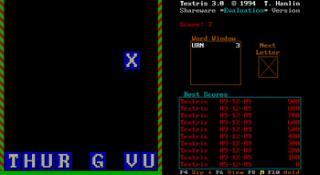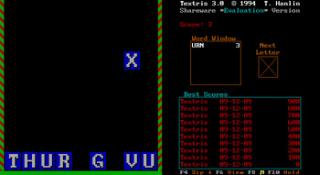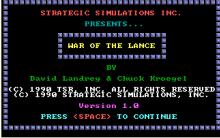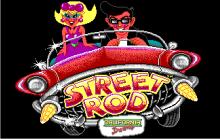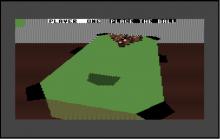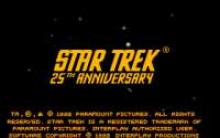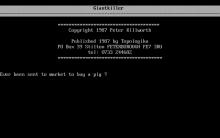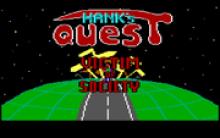Textris
Press Keyboard right side: Alt+Enter keys to switch to full screen game play, and Alt+Enter keys to return.
How to play Textris
When playing Textris on the ClassicReload.com website, which typically runs DOS games through an emulator like DOSBox, the controls are primarily keyboard-based:
- Arrow Keys (Left/Right): Move the falling letter(s) horizontally.
- Arrow Key (Down): Accelerate the descent of the falling letter(s).
- Arrow Key (Up): Rotate the falling letter(s) (if applicable).
- Enter Key / Spacebar: Confirm placement or activate a function.
- Typing Keys (A-Z): In some variations, you might be prompted to type out the word you intend to form, though in the basic Textris as described, words form automatically.
Textris Description
Textris is a unique puzzle game released in 1993, blending the falling-block mechanics of Tetris with the word-forming challenge of Scrabble. In this DOS-based game, rather than traditional block shapes, individual letters descend from above in a steady stream.
Players must strategically place these letters to form valid words, which then disappear and award points. Any letters that are not used in a word remain on the playing field, gradually filling up the screen. The game ends when the accumulating unused letters reach the top of the playing area, leaving no space for new words. It’s lauded for being both an engaging spelling practice tool and an addictive puzzle experience.
The Origins of Textris: A 1993 DOS Classic
Textris emerged in 1993 during the prime era of DOS-based PC gaming. Its creation reflects a period of innovation in the puzzle genre, where developers often experimented with combining established gameplay styles in novel ways.

While the game achieved a degree of popularity within its niche, specific detailed historical accounts of its development are scarce compared to more mainstream titles. It represents a creative spin on the ubiquitous Tetris formula, aiming to challenge players intellectually as well as spatially.
Who Made Textris?
The specific company that developed or published the 1993 DOS game Textris is not widely documented in easily accessible historical records. Many shareware or smaller titles from that era were developed by independent programmers or very small studios whose corporate identities might not have been extensively preserved.
How Textris Works: Gameplay Overview
Textris offers a straightforward yet challenging gameplay loop:
- Falling Letters: Individual letters (or sometimes small groups of letters) fall from the top of the screen.
- Placement: Players control the movement and rotation of these falling letters, aiming to position them next to existing letters on the board.
- Word Formation: The objective is to arrange letters to form valid English words, either horizontally or vertically. The longer and more complex the word, the higher the score.
- Clearing Lines/Words: Once a valid word is formed, the letters composing that word disappear from the screen, much like lines clear in Tetris.
- Clutter Management: Letters not used in words remain on the board. Over time, these unused letters accumulate, filling up the playing field.
- Game Over: The game concludes when the pile of unused letters reaches the top of the screen, preventing new letters from falling.
Textris-Inspired Games and Modern Equivalents
While there isn't a direct modern remake of Textris, its core concept of falling letters and word formation has influenced or is paralleled by several contemporary word puzzle games:

- WordsWorth is a mobile word game that involves swapping descending letters to form valid words.
- In PopCap’s Bookworm, players connect adjacent letters in multiple directions to build words, earn points, and remove tiles from the grid.
- Word Fall / Falling Blocks Word Games (Mobile Apps): Many mobile games in app stores offer variations on the "falling letters" or "falling blocks, form words" concept, often under generic titles. These are the most direct, albeit unofficial, spiritual successors to Textris, adapting the core idea for touchscreens and modern interfaces.
- Tetris variants with a twist: Games that take the core Tetris concept and introduce new elements, even if not specifically word-based, are also distant relatives in terms of genre innovation.
Textris is a little like Tetris and a little like Scrabble. Random letters fall from the sky. Fit them together to make words for points. Unused letters remain behind, cluttering the arena until at last there is no space left to build new words. Good spelling practice and addictive fun! Requires an EGA, VGA or better display.
Textris Walkthrough: How to Play for High Scores
Textris does not have a traditional "walkthrough" as it's a high-score-driven puzzle game with no set levels or story progression. The goal is simply to survive as long as possible by continually clearing words and managing the board space.
Cheats/Hints/Walkthroughs for Textris
- Look Ahead: Always try to anticipate where future letters might fall and plan your placements to set up longer words.
- Focus on positioning frequently used letters—such as vowels and common consonants like R, S, T, L, and N—where they can be easily included in future words.
- Avoid Isolated Letters: Try to avoid leaving single letters or small, unworkable clusters that are difficult to incorporate into future words.
- Build from the Bottom: Like Tetris, keeping the bottom of your playing area clear and flat gives you more placement flexibility.
- Strategic Stacking: Even when you can't form a full word, arrange letters to create setups for future combinations.
- Practice Spelling: The better your vocabulary and reflexes, the more effective your strategy will be. This puzzle combines fast-paced reactions with word-building skills, putting a unique twist on the classic falling-block format.
